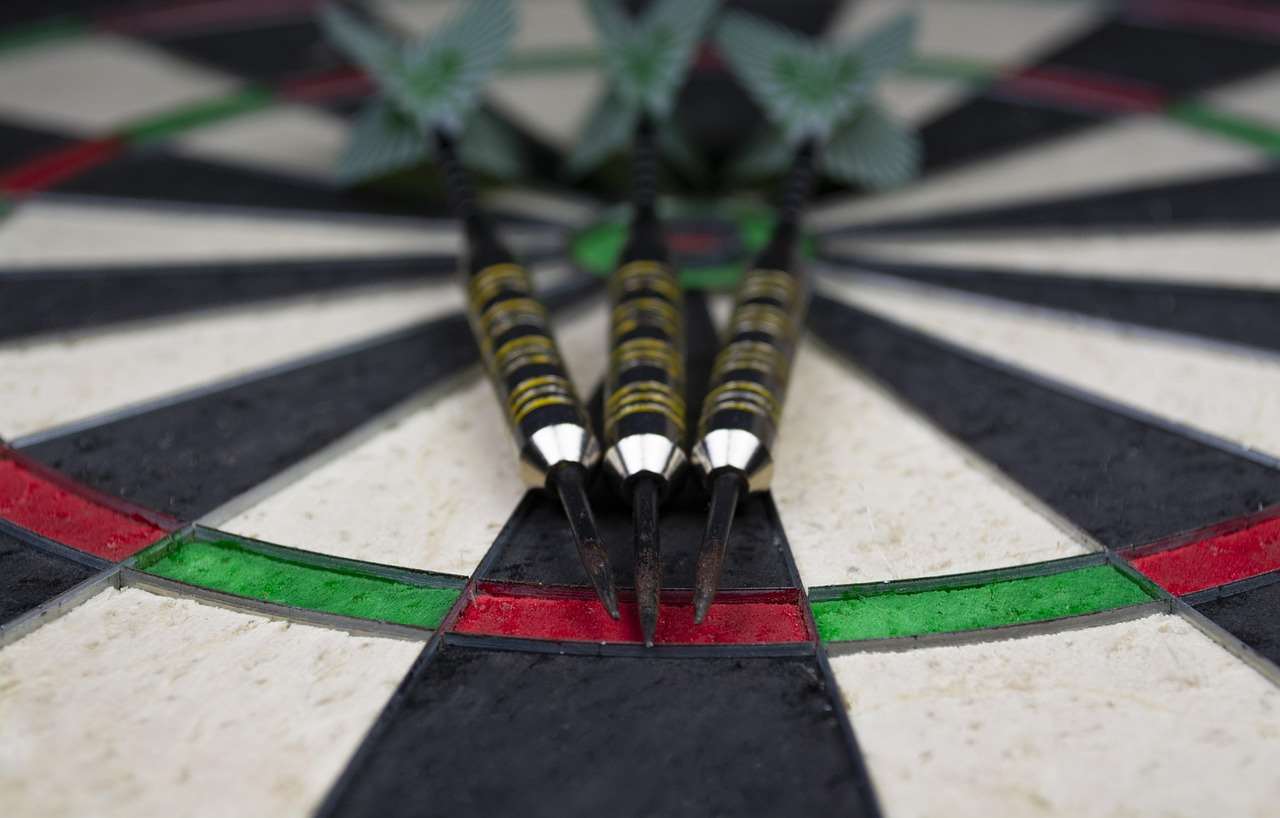Effective Suspicious Betting Activity Reporting is crucial for maintaining the integrity of sports and preventing corruption; it’s the process of identifying and reporting unusual betting patterns that could indicate match-fixing, insider information, or other illegal activities. This article will explore the key aspects of recognizing and reporting suspicious betting activity, focusing on regulatory frameworks, practical reporting mechanisms, and the collaborative efforts needed to protect sports.
⚠️ Still Using Pen & Paper (or a Chalkboard)?! ⚠️
Step into the future! The Dart Counter App handles all the scoring, suggests checkouts, and tracks your stats automatically. It's easier than you think!
Try the Smart Dart Counter App FREE!Ready for an upgrade? Click above!
Understanding Suspicious Betting Activity Reporting
Suspicious Betting Activity Reporting forms the cornerstone of combating corruption in sports. It involves the detection and notification of unusual or anomalous betting patterns to relevant authorities. These authorities then investigate to determine if the activity is linked to illegal practices, such as match-fixing or the use of inside information. Successful implementation depends on awareness, vigilance, and a coordinated effort from all stakeholders, including betting operators, sports governing bodies, and law enforcement agencies.
The purpose of suspicious betting reporting is multifaceted:
- Deterrence: Creating a climate where potential corruptors know that their actions are likely to be detected and reported.
- Early Detection: Identifying suspicious activity before it can significantly impact the integrity of a sporting event.
- Investigation: Providing authorities with the necessary information to investigate and prosecute those involved in corrupt practices.
- Prevention: Developing strategies to prevent future incidents of corruption based on the analysis of past cases.

Key Indicators of Suspicious Betting Activity
Identifying suspicious betting patterns requires a keen eye and an understanding of normal betting behavior. Some common indicators include:
- Unusual Betting Volume: A sudden and significant increase in betting volume on a particular event or outcome, especially if it deviates from historical norms.
- Large Bets on Obscure Events: Large wagers placed on relatively unknown or low-profile sporting events.
- Late Bets: Bets placed very close to the start of an event, potentially indicating the bettor has inside information.
- Bets Contradicting Public Opinion: Wagers that go against the general sentiment or expert predictions.
- Identical Betting Patterns Across Multiple Accounts: Similar betting patterns occurring across several different accounts, possibly indicating coordinated activity.
- Changes in Odds: Sudden and significant shifts in odds that cannot be explained by normal factors, such as injuries or team news.
It’s important to note that these indicators, on their own, do not necessarily prove that corruption has occurred. However, they should raise red flags and prompt further investigation. A guide to darts betting and fantasy leagues can offer more insights into normal wagering patterns.
Regulatory Frameworks for Suspicious Betting Reporting
Globally, various regulatory frameworks are in place to govern Suspicious Betting Activity Reporting. These frameworks aim to standardize reporting procedures, ensure data protection, and facilitate international cooperation. Key organizations involved include:
- Gaming Regulators: National or regional bodies responsible for licensing and regulating betting operators. They typically require operators to report suspicious activity.
- Sporting Governing Bodies: Organizations that oversee specific sports, such as FIFA (football) or the International Olympic Committee (IOC). They have their own integrity units that investigate potential corruption.
- Law Enforcement Agencies: Police forces and other law enforcement agencies that are responsible for investigating and prosecuting criminal offenses related to sports corruption.
- Financial Intelligence Units (FIUs): Agencies that collect and analyze financial intelligence to combat money laundering and other financial crimes. They may be involved in investigating suspicious betting activity if it is linked to money laundering.
The specific requirements for suspicious transaction reporting can vary depending on the jurisdiction. However, common elements include:
- Mandatory Reporting: Betting operators are legally required to report suspicious activity to the relevant authorities.
- Designated Reporting Channels: Clear channels and procedures for reporting suspicious activity.
- Data Protection: Measures to protect the privacy of individuals and the confidentiality of information.
- Training and Education: Requirements for betting operators to train their staff to identify and report suspicious activity.

The Role of Betting Operators in Identifying Suspicious Activity
Betting operators are on the front lines of detecting suspicious betting activity. They have access to vast amounts of data on betting patterns and customer behavior, which allows them to identify anomalies that might indicate corruption. To effectively fulfill their role, operators should:
- Implement robust monitoring systems: Use technology to automatically flag unusual betting patterns.
- Train staff: Provide comprehensive training to employees on how to recognize and report suspicious activity.
- Establish clear reporting procedures: Make it easy for staff to report concerns to the appropriate authorities.
- Cooperate with authorities: Work closely with regulators, sporting bodies, and law enforcement agencies to investigate potential corruption.
Some operators use sophisticated algorithms and machine learning techniques to detect unusual betting patterns. These systems can analyze factors such as betting volume, odds movements, customer demographics, and the history of sporting events to identify potential red flags. However, it’s crucial to remember that technology is only a tool, and human judgment is still essential in assessing whether activity is truly suspicious.
Practical Steps for Suspicious Betting Activity Reporting
When suspicious betting activity is identified, it is crucial to follow established procedures for reporting. This typically involves the following steps:
- Gather Information: Collect as much relevant information as possible, including details about the event, the betting patterns, the customers involved, and any other relevant circumstances.
- Document Findings: Record all findings in a clear and concise manner. Maintain a detailed record of the investigation, including dates, times, individuals involved, and specific observations.
- Internal Review: Conduct an internal review of the information to determine if it meets the threshold for reporting.
- Report to Authorities: Submit a report to the appropriate authorities, such as the gaming regulator, the sporting governing body, or law enforcement agency.
- Maintain Confidentiality: Protect the confidentiality of the report and the information it contains.

Content of a Suspicious Betting Activity Report
A suspicious betting activity report should typically include the following information:
- Details of the event: Date, time, location, and participants.
- Description of the suspicious activity: A clear and concise explanation of why the activity is considered suspicious.
- Information about the bettors: Customer names, account numbers, contact details, and betting history.
- Betting patterns: Details of the bets placed, including amounts, odds, and timing.
- Any other relevant information: Any other information that may be relevant to the investigation, such as communications with customers or observations of unusual behavior.
It is important to provide as much detail as possible in the report to assist the authorities in their investigation. Accuracy and objectivity are also crucial; avoid making assumptions or drawing conclusions without sufficient evidence. The report should be based on factual observations and analysis.
Challenges in Suspicious Betting Activity Reporting
Despite the established frameworks and procedures, there are several challenges in effectively implementing Suspicious Betting Activity Reporting:
- Lack of Awareness: Some individuals and organizations may not be fully aware of the risks of sports corruption or the importance of reporting suspicious activity.
- Underreporting: Even when suspicious activity is detected, it may not always be reported, due to fear of reprisal, lack of confidence in the reporting process, or a belief that the activity is not serious enough.
- Data Protection Concerns: Balancing the need to share information for investigative purposes with the need to protect the privacy of individuals.
- Cross-Border Cooperation: Sports corruption often involves actors from multiple countries, making it challenging to investigate and prosecute.
Addressing these challenges requires a multi-pronged approach:
- Raising Awareness: Conducting educational campaigns to inform stakeholders about the risks of sports corruption and the importance of reporting suspicious activity.
- Strengthening Reporting Mechanisms: Making it easier and safer for individuals to report suspicious activity, for example, by providing anonymous reporting channels.
- Enhancing Data Protection: Implementing robust data protection measures to ensure that information is shared responsibly and in compliance with privacy laws.
- Promoting International Cooperation: Strengthening cooperation between law enforcement agencies, gaming regulators, and sporting bodies across different countries.

Technological Advancements in Detecting Suspicious Activity
Technology plays an increasingly vital role in detecting suspicious betting activity. Sophisticated algorithms and data analytics tools can analyze vast amounts of betting data in real-time, identifying patterns and anomalies that would be impossible for humans to detect manually. Some examples of technological advancements include:
- Machine Learning: Using machine learning algorithms to identify suspicious betting patterns based on historical data.
- Artificial Intelligence (AI): Employing AI to analyze customer behavior and detect anomalies that may indicate fraudulent activity.
- Network Analysis: Using network analysis techniques to identify connections between different bettors and uncover coordinated activity.
- Real-Time Monitoring: Monitoring betting activity in real-time to detect suspicious patterns as they occur.
These technologies can significantly enhance the effectiveness of suspicious betting activity reporting by enabling operators to detect and report suspicious activity more quickly and accurately. However, it’s important to ensure that these technologies are used responsibly and ethically, and that human oversight is maintained.
The Impact of Suspicious Betting Activity Reporting on Sports Integrity
Effective Suspicious Betting Activity Reporting is essential for protecting the integrity of sports. By detecting and preventing corruption, it helps to ensure that sporting events are fair, honest, and free from undue influence. The benefits of a strong reporting system include:
- Maintaining Public Trust: Preserving public confidence in the fairness and integrity of sports.
- Protecting Athletes: Shielding athletes from pressure to engage in corrupt practices.
- Promoting Fair Competition: Ensuring that all athletes have a fair chance to compete on a level playing field.
- Preventing Financial Losses: Protecting betting operators and other stakeholders from financial losses due to corruption.
Conversely, a weak or ineffective reporting system can have devastating consequences for sports. It can lead to widespread corruption, loss of public trust, and ultimately, the collapse of entire sporting leagues or organizations. You might be interested to read about darts sponsorship and betting.

Future Trends in Combating Sports Corruption
The fight against sports corruption is an ongoing battle, and new challenges are constantly emerging. Some future trends in combating sports corruption include:
- Increased Use of Data Analytics: Further development and deployment of sophisticated data analytics tools to detect suspicious betting activity.
- Greater International Cooperation: Strengthening cooperation between law enforcement agencies, gaming regulators, and sporting bodies across different countries.
- Focus on Prevention: Implementing more proactive measures to prevent corruption from occurring in the first place, such as educational programs and integrity training.
- Regulation of New Betting Markets: Adapting regulatory frameworks to address the challenges posed by new and emerging betting markets, such as esports and virtual sports.
By staying ahead of the curve and embracing new technologies and strategies, we can continue to protect the integrity of sports and ensure that they remain a source of enjoyment and inspiration for generations to come.
Conclusion
Suspicious Betting Activity Reporting is a critical component of safeguarding the integrity of sports. By understanding the indicators of suspicious activity, adhering to regulatory frameworks, and embracing technological advancements, all stakeholders can play a vital role in preventing corruption and ensuring fair play. The importance of vigilance, cooperation, and proactive measures cannot be overstated. Remember, effective reporting is not just a legal obligation; it’s a shared responsibility to protect the spirit and values of sports. Take the next step and educate yourself further on the specific regulations in your jurisdiction, ensuring you are prepared to identify and report any unusual betting activity you encounter. Consider reading more about how betting companies sponsor darts for additional insights.
Hi, I’m Dieter, and I created Dartcounter (Dartcounterapp.com). My motivation wasn’t being a darts expert – quite the opposite! When I first started playing, I loved the game but found keeping accurate scores and tracking stats difficult and distracting.
I figured I couldn’t be the only one struggling with this. So, I decided to build a solution: an easy-to-use application that everyone, no matter their experience level, could use to manage scoring effortlessly.
My goal for Dartcounter was simple: let the app handle the numbers – the scoring, the averages, the stats, even checkout suggestions – so players could focus purely on their throw and enjoying the game. It began as a way to solve my own beginner’s problem, and I’m thrilled it has grown into a helpful tool for the wider darts community.